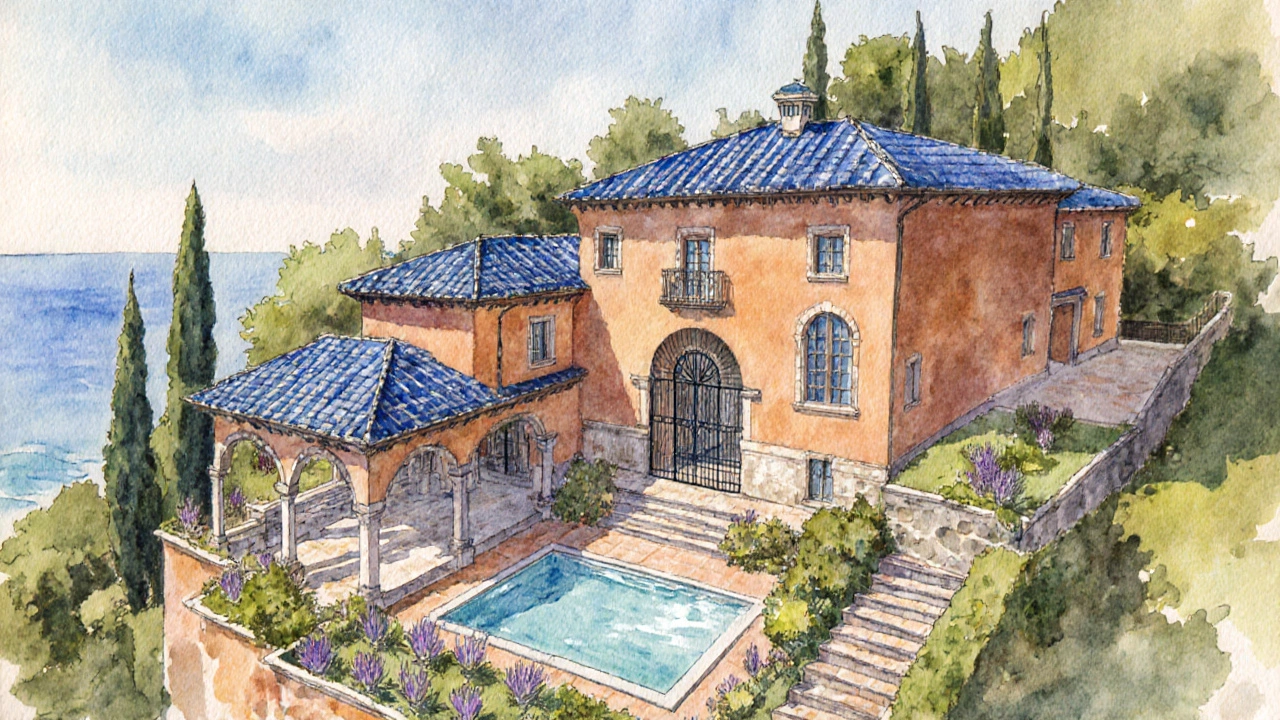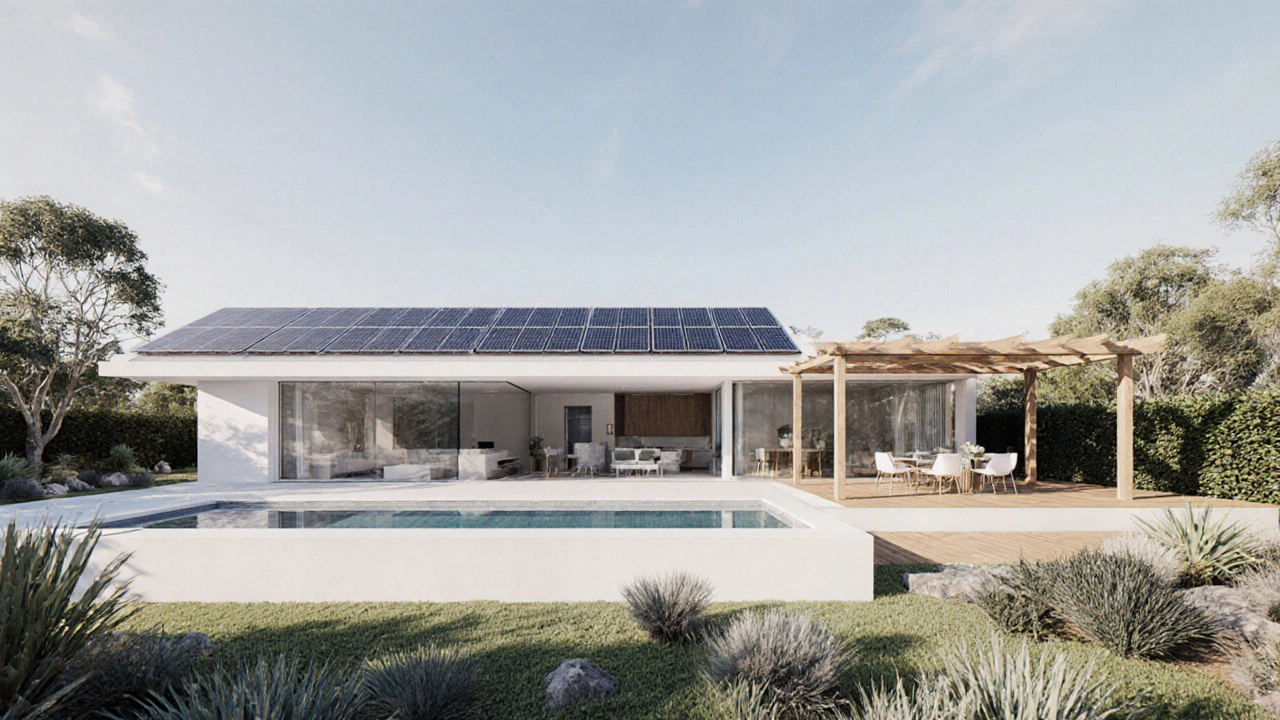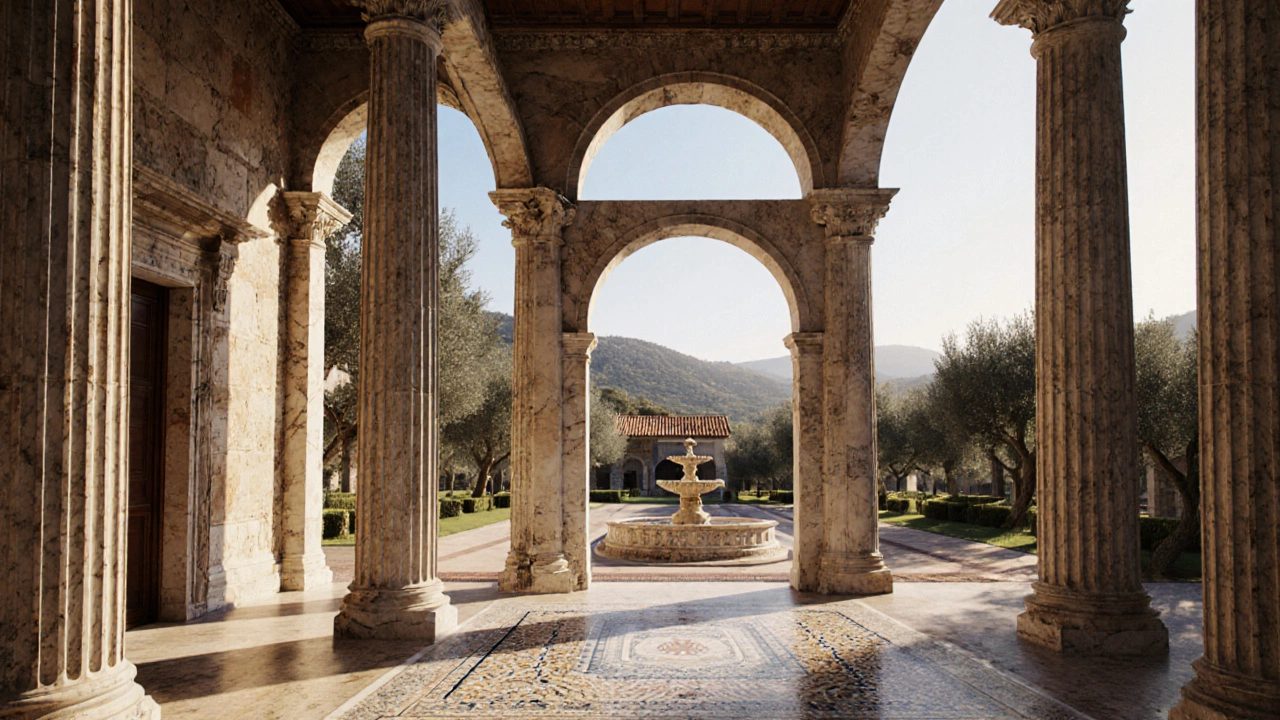Villa Style Identifier
Discover what regional style your dream villa might have! Select the features you notice most in a villa design to identify its architectural roots.
Identified Villa Style:
Ever walked past a sprawling, column‑lined property and wondered, "What style of house is a villa?" You're not alone. A villa isn’t just a fancy word for a big house; it’s a distinct architectural language that blends history, climate, and lifestyle. This guide breaks down the definition, core features, regional twists, and how a villa stacks up against other home types, so you can spot a true villa wherever you go.
Definition and Historical Roots
When most people think of a Villa is a luxurious, often detached residence that originated in ancient Roman countryside estates. The Romans called it "villa urbana" for city‑side retreats and "villa rustica" for agricultural farms. Over centuries, the concept migrated to Mediterranean seaports, then to colonial markets worldwide, morphing with local tastes while preserving a sense of spaciousness and leisure.
Core Architectural Features
A true villa shares several hallmark traits, regardless of geography:
- Symmetrical layouts - many villas follow a balanced floor plan with a central axis.
- Grand entrances - often a portico, colonnade, or arched doorway that makes a statement.
- Outdoor‑indoor flow - terraces, loggias, and shaded courtyards blur the line between interior and garden.
- High ceilings and large windows - designed to catch breezes and flood rooms with natural light.
- Quality materials - stone, stucco, terracotta tiles, and timber frame work are common.
These elements serve both aesthetics and climate comfort, especially in warm regions where shade and ventilation are essential.

Major Regional Styles
While the core idea stays the same, villas adapt to local culture. Below are the most influential regional expressions.
Mediterranean style blends Italian Renaissance, Spanish Colonial, and Greek influences, featuring stucco walls, red‑tile roofs, and wrought‑iron details is the most recognizable worldwide. Its palette of earth tones and emphasis on outdoor living make it popular in California, Australia, and South Africa.
Italian Renaissance villa exhibits symmetrical façades, pilasters, and ornate cornices, reflecting 15th‑century palazzo design often includes a central courtyard (cortile) and elaborate frescoes.
Spanish Colonial villa uses thick adobe or stone walls, low‑pitch clay roofs, and arcaded walkways, suited for hot, arid climates is common in Latin America and the American Southwest.
Modern villa reinterprets traditional forms with clean lines, floor‑to‑ceiling glass, and minimalist interiors often incorporates sustainable systems like solar panels and rainwater harvesting.
In the UK and Ireland, Country house villa merges Georgian symmetry with landscaped gardens, delivering a stately yet relaxed vibe that suits cooler climates.
Villa vs. Other House Types
| Aspect | Villa | Apartment | Townhouse | Detached House |
|---|---|---|---|---|
| Typical Size | 2,500-6,000sqft (or larger) | 500-1,200sqft | 1,200-2,500sqft | 1,500-3,500sqft |
| Land Ownership | Private plot with gardens, often >0.25acre | None (shared building) | Often a small yard | Yard varies, usually <0.25acre |
| Architectural Focus | Grand entry, outdoor‑indoor flow, high‑end finishes | Space efficiency, vertical living | Row‑style façades, shared walls | Balanced design, private amenities |
| Typical Locations | Coastal, historic districts, upscale suburbs | City centers | Urban fringe, mixed‑use areas | Suburban neighborhoods |
Understanding these contrasts helps you decide whether a villa aligns with your lifestyle and budget.
Choosing a Villa Style for Your Home
When planning a new build or renovating an existing property, ask yourself three practical questions:
- What climate does the site experience? Warm, dry regions benefit from Mediterranean or Spanish Colonial features like deep overhangs and courtyards. Cooler zones may favor a Country house villa with thicker walls and fireplace focal points.
- How do you use outdoor space? If you love al fresco dining and poolside lounging, prioritize terraces, loggias, and garden integration.
- Which aesthetic resonates with you? Classic lovers might gravitate to Italian Renaissance detailing, while modern minimalists will enjoy clean‑line Modern villas.
Once your priorities are clear, work with an architect familiar with floor plan design that balances symmetry and functional flow for villa projects. A good floor plan will usually have a central hall, double‑height living area, and easy access to outdoor zones.

Common Misconceptions About Villas
Many people think a villa must be massive, expensive, or only found in Europe. In reality:
- Villas come in a range of sizes-from modest 2,000sqft coastal retreats to sprawling 10,000sqft estates.
- Materials can be locally sourced. A Queensland villa might use timber verandas and painted brick, still embodying the villa spirit.
- Modern construction techniques allow for energy‑efficient villas that cost less to run than a typical suburban house.
So, a villa is more about design intent-spaciousness, connection to nature, and a touch of elegance-than about any single metric.
Quick Checklist: Is Your Property a Villa?
- Detached structure with its own plot of land.
- Prominent entrance (portico, arches, or grand doorway).
- Architectural elements that promote indoor‑outdoor living.
- Use of high‑quality, often natural, materials.
- Design reflects a recognized regional style or a cohesive modern interpretation.
If you tick most of these boxes, you’re likely looking at a villa, even if the property isn’t labeled as such.
Frequently Asked Questions
What differentiates a villa from a regular house?
A villa traditionally emphasizes a grand, symmetrical façade, dedicated outdoor spaces, and often sits on a larger private plot. While a regular house can share some of these traits, a villa’s design intent is to convey luxury and a seamless indoor‑outdoor experience.
Can a modern home be called a villa?
Yes. Modern architects reinterpret classic villa principles-spacious layouts, ample natural light, and strong connections to surrounding land-using contemporary materials, glass walls, and sustainable technologies.
Is a villa always expensive?
Cost depends on size, location, and finishes. A modestly sized villa built with local materials can be more affordable than a high‑end townhouse in a city center.
Which villa style suits a coastal Australian climate?
A Mediterranean‑inspired villa works well: stucco walls, terracotta roofs, shaded verandas, and cross‑ventilation keep interiors cool while offering a relaxed seaside vibe.
Do villas have strict floor‑plan rules?
While symmetry and a central axis are common, architects adapt layouts to the site’s topography, client needs, and modern living standards. Flexibility is a hallmark of contemporary villa design.





